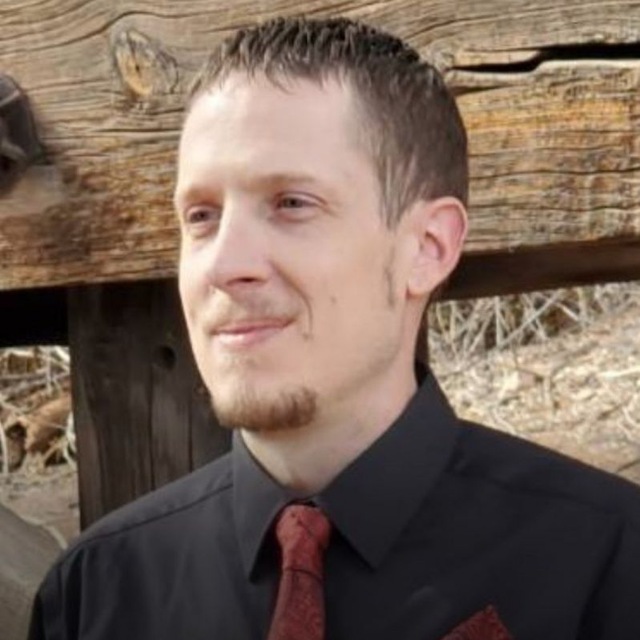Watch Video on: | Bitchute | Odysee | YouTube | Flote | Download Video
This post was originally posted on TylerBloyer.com
Welcome to the Bio-PsyWar which is part 11 in the series.
This episode is a continuation of the recent work I've done on:
- Getting Ready for Human 2.0
- CyberPentagon
- Total PSYOP Awareness
- Bio-PsyWar | Purpose and Scope
- Bio-PsyWar | Commencement of Hostilities
- Bio-PsyWar | Strategic Psychological Operations
- Bio-PsyWar | Double Edged Developments
- Bio-PsyWar | Tick-Tok Bio-Op
- Bio-PsyWar | Tick-Tok Bio-Op P2
- Bio-PsyWar | Aerosolized Innovations
- Bio-PsyWar | Self-Fulfilling Catastrophe
- Bio-PsyWar | Research of a Different Color
- Bio-PsyWar | Message In The Anthrax
See Also:
- The Creature of Control Brain from TylerBloyer.com
- Grand Theft World Podcast 007 | The CyberPanopticon
- Grand Theft World Podcast 011 | Worldview Warfare
- Adam Finnegan | Features Guest on Grand Theft World 09
- Dave Emory: Archives
- FTR #1119 and FTR #1120 DARPA and the Covid-19 Outbreak, Part 1 and DARPA and the Covid-19 Outbreak, Part 2
- FTR #‘s 1135, Lyme Disease and Biological Warfare, Part 1
- FTR #1156 Bio-Psy-Op Apocalypse Now, Part 16: An Ounce of Prevention.
- FTR #‘s 1157, 1158 and 1159–Bio-Psy-Op Apocalypse Now, Parts 17, 18 and 19: An Ounce of Prevention, Parts 2, 3 and 4
- Peter Daszak’s EcoHealth Alliance Has Hidden Almost $40 Million In Pentagon Funding And Militarized Pandemic Science
- The Lancet - Will influenza be the next bioweapon?
- Synthetic biology raises risk of new bioweapons, US report warns
- Synthetic recombinant bat SARS-like coronavirus is infectious in cultured cells and in mice
- US officials revisit rules for disclosing risky disease experiments
- Fort Detrick lab shut down after failed safety inspection; all research halted indefinitely
- US military plan to spread viruses using insects could create ‘new class of biological weapon’, scientists warn
- A Biosecurity Failure -America’s key lab for fighting infectious disease has become a Pentagon backwater.
- Bats, Gene Editing and Bioweapons: Recent DARPA Experiments Raise Concerns Amid Coronavirus Outbreak
- Forget Ebola, Sars and Zika: ticks are the next global health threat
- House of Representatives orders Pentagon to investigate whether ticks were once used as biological weapons
- Double-Edged Innovations: Preventing the Misuse of Emerging Biological/Chemical Technologies
- Project Coast
Bayer AG (/ˈbeɪ.ər, ˈbaɪ.ər/; German: [ˈbaɪɐ]) is a German multinational pharmaceutical and life sciences company and one of the largest pharmaceutical companies in the world. Headquartered in Leverkusen, Bayer's areas of business include human and veterinary pharmaceuticals; consumer healthcare products; agricultural chemicals, seeds and biotechnology products. The company is a component of the Euro Stoxx 50 stock market index.[3] Werner Baumann has been CEO since 2016.[4]
Founded in Barmen in 1863 as a dyestuffs factory,[citation needed] Bayer's first and best-known product was aspirin.[citation needed] In 1898 Bayer trademarked the name heroin for the drug diacetylmorphine and marketed it as a cough suppressant and non-addictive substitute for morphine until 1910. Bayer also introduced phenobarbital; prontosil, the first widely used antibiotic and the subject of the 1939 Nobel Prize in Medicine; the antibiotic Cipro (ciprofloxacin); and Yaz (drospirenone) birth control pills.[citation needed]
In 1925, Bayer was one of six chemical companies that merged to form IG Farben,[5] the world's largest chemical and pharmaceutical company. The Allied Control Council seized IG Farben after World War II,[a][6] because of its role in the Nazi war effort and involvement in the Holocaust, which included using slave labour from concentration camps and the purchase of humans for dangerous medical testing. It was split into its six constituent companies in 1951, then split again into three: BASF, Bayer and Hoechst.[7][8]
Bayer played a key role in the Wirtschaftswunder in post-war West Germany, quickly regaining its position as one of the world's largest chemical and pharmaceutical corporations. In 2006, the company acquired Schering, in 2014, it acquired Merck & Co.'s consumer business, with brands such as Claritin, Coppertone and Dr. Scholl's, and in 2018, it acquired Monsanto, a leading producer of genetically engineered crops, for $63 billion.[9] Bayer CropScience develops genetically modified crops and pesticides.
https://en.wikipedia.org/wiki/Bayer#Controversies
IG Farben
Interessengemeinschaft Farbenindustrie AG (German for ''Dye industry syndicate corporation''), commonly known as IG Farben (German for "IG Color"), was a German chemical and pharmaceutical conglomerate. Formed in 1925 from a merger of six chemical companies—BASF, Bayer, Hoechst, Agfa, Chemische Fabrik Griesheim-Elektron, and Chemische Fabrik vorm. Weiler Ter Meer[1]—it was seized by the Allies after World War II and divided back into its constituent companies.[a]
In its heyday, IG Farben was the largest company in Europe and the largest chemical and pharmaceutical company in the world.[4] IG Farben scientists made fundamental contributions to all areas of chemistry and the pharmaceutical industry. Otto Bayer discovered the polyaddition for the synthesis of polyurethane in 1937,[5] and three company scientists became Nobel laureates: Carl Bosch and Friedrich Bergius in 1931 "for their contributions to the invention and development of chemical high pressure methods",[6] and Gerhard Domagk in 1939 "for the discovery of the antibacterial effects of prontosil".[7]
The company had ties in the 1920s to the liberal German People's Party and was accused by the Nazis of being an "international capitalist Jewish company".[8] A decade later, it was a Nazi Party donor and, after the Nazi takeover of Germany in 1933, a major government contractor, providing significant material for the German war effort. Throughout that decade it purged itself of its Jewish employees; the remainder left in 1938.[9] Described as "the most notorious German industrial concern during the Third Reich"[10] in the 1940s the company relied on slave labour from concentration camps, including 30,000 from Auschwitz,[11] and was involved in medical experiments on inmates at both Auschwitz and the Mauthausen concentration camp.[12][13] One of its subsidiaries supplied the poison gas, Zyklon B, that killed over one million people in gas chambers during the Holocaust.[b][15]
The Allies seized the company at the end of the war in 1945[a] and the US authorities put its directors on trial. Held from 1947 to 1948 as one of the subsequent Nuremberg trials, the IG Farben trial saw 23 IG Farben directors tried for war crimes and 13 convicted.[16] By 1951 all had been released by the American high commissioner for Germany, John J. McCloy.[17] What remained of IG Farben in the West was split in 1951 into its six constituent companies, then again into three: BASF, Bayer and Hoechst.[a] These companies continued to operate as an informal cartel and played a major role in the West German Wirtschaftswunder. Following several later mergers the main successor companies are Agfa, BASF, Bayer and Sanofi. In 2004 the University of Frankfurt, housed in the former IG Farben head office, set up a permanent exhibition on campus, the Norbert Wollheim memorial, for the slave labourers and those killed by Zyklon B.[18]
https://en.wikipedia.org/wiki/IG_Farben
Contaminated haemophilia blood products
From Wikipedia, the free encyclopedia
Jump to navigationJump to searchContaminated haemophilia blood products were a serious public health problem in the late 1970s up to 1985.
These products caused large numbers of hemophiliacs to become infected with HIV and hepatitis C. The companies involved included Alpha Therapeutic Corporation, Institut Mérieux (which then became Rhone-Poulenc Rorer Inc., and is now part of Sanofi), Bayer Corporation and its Cutter Biological division, Baxter International and its Hyland Pharmaceutical division.[1] Estimates range from 6,000 to 10,000 hemophiliacs in the United States becoming infected with HIV.[1][2]
Factor VIII is a protein that helps the clotting of blood, which hemophiliacs, due to the genetic nature of their condition, are unable to produce themselves. By injecting themselves with it, hemophiliacs can stop bleeding or prevent bleeding from starting; some use it as often as three times a week.[3]
https://en.wikipedia.org/wiki/Contaminated_haemophilia_blood_products
Bayer division 'knowingly sold' HIV-infected protein
A division of the German pharmaceutical company Bayer knowingly sold blood-clotting agents infected with HIV to Asia and Latin America months after withdrawing them from Europe and the US, an American newspaper claimed yesterday.
Cutter Biological continued to dump stocks of the factor VIII blood-clotting agent for haemophiliacs on poor countries for nearly a year after introducing a safer alternative, the report in the New York Times said.
It happened in the early 80s, after the Centres for Disease Control in Atlanta, Georgia, reported in July 1982 that haemophiliacs were becoming ill from blood products.
Up to that time factor VIII, produced from the plasma of about 10,000 donors, was not screened for HIV, and it became a leading killer of haemophiliacs in the early years of Aids.
Yesterday Bayer, which has paid out $600m (£375m) to settle lawsuits brought by thousands of American haemophiliacs, insisted it had "always behaved responsibly, ethically, and humanely".
https://www.theguardian.com/world/2003/may/23/aids.suzannegoldenberg
The Molecular Vision of Life: Caltech, the Rockefeller Foundation, and the Rise of the New Biology (Monographs on the History and Philosophy of Biology)
This fascinating study examines the rise of American molecular biology to disciplinary dominance, focusing on the period between 1930 and the elucidation of DNA structure in the mid 1950s. Research undertaken during this period, with its focus on genetic structure and function, endowed scientists with then unprecedented power over life. By viewing the new biology as both a scientific and cultural enterprise, Lily E. Kay shows that the growth of molecular biology was a result of systematic efforts by key scientists and their sponsors to direct the development of biological research toward a shared vision of science and society. She analyzes the motivations and mechanisms empowering this vision by focusing on two key institutions: Caltech and its sponsor, the Rockefeller Foundation. Her study explores a number of vital, sometimes controversial topics, among them the role of private power centers in shaping scientific agenda, and the political dimensions of "pure" research. It also advances a sobering argument: the cognitive and social groundwork for genetic engineering and human genome projects was laid by the American architects of molecular biology during these early decades of the project. This book will be of interest to molecular biologists, historians, sociologists, and the general reader alike.
https://www.amazon.com/Molecular-Vision-Life-Rockefeller-Foundation/dp/0195111435
Resources:
- Bayer Distributes AIDS
- The Dark History of Bayer Corp
- Bayer
- IG Farben
- Contaminated haemophilia blood products
- Bayer Sold HIV-Risky Meds
- Bayer Admits It Paid "Millions" in HIV Infection Cases -- Just Not in English
- Bayer Documents: AIDS Tainted Blood Killed Thousands of Hemophiliacs
- Bayer division 'knowingly sold' HIV-infected protein
- A Higher Form of Killing: The Secret History of Chemical and Biological Warfare
- FTR #1012 Food For Thought, Part 2
- Operation Paperclip - Annie Jacobson
- The Molecular Vision of Life: Caltech, the Rockefeller Foundation, and the Rise of the New Biology (Monographs on the History and Philosophy of Biology)
- How Big Oil Conquered the World


